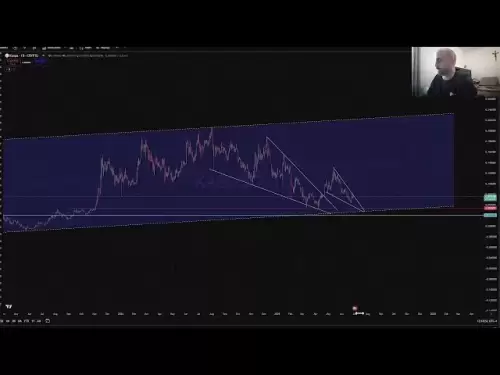-
 Bitcoin
Bitcoin $107,352.1067
0.28% -
 Ethereum
Ethereum $2,429.3531
-0.90% -
 Tether USDt
Tether USDt $1.0001
-0.02% -
 XRP
XRP $2.1894
4.62% -
 BNB
BNB $646.7968
0.36% -
 Solana
Solana $147.4290
4.03% -
 USDC
USDC $0.9998
-0.02% -
 TRON
TRON $0.2756
1.52% -
 Dogecoin
Dogecoin $0.1630
1.14% -
 Cardano
Cardano $0.5612
1.18% -
 Hyperliquid
Hyperliquid $37.0580
-0.05% -
 Bitcoin Cash
Bitcoin Cash $496.9410
-0.09% -
 Sui
Sui $2.7318
3.19% -
 Chainlink
Chainlink $13.1503
0.58% -
 UNUS SED LEO
UNUS SED LEO $9.0766
0.55% -
 Avalanche
Avalanche $17.7220
1.46% -
 Stellar
Stellar $0.2380
1.52% -
 Toncoin
Toncoin $2.8439
0.38% -
 Shiba Inu
Shiba Inu $0.0...01143
1.84% -
 Litecoin
Litecoin $85.8053
1.47% -
 Hedera
Hedera $0.1483
2.70% -
 Monero
Monero $314.3240
2.12% -
 Bitget Token
Bitget Token $4.6725
0.77% -
 Dai
Dai $1.0000
0.00% -
 Polkadot
Polkadot $3.3555
1.28% -
 Ethena USDe
Ethena USDe $1.0001
0.02% -
 Uniswap
Uniswap $7.0890
2.64% -
 Pi
Pi $0.5355
-3.40% -
 Pepe
Pepe $0.0...09393
1.06% -
 Aave
Aave $256.8136
-1.90%
How can Singapore users bind their bank cards to OKX?
Binding a bank card to OKX in Singapore involves logging in, navigating to "Funds," selecting "Deposit," entering card details, and verifying. Always prioritize security and check supported banks.
Apr 01, 2025 at 02:21 pm
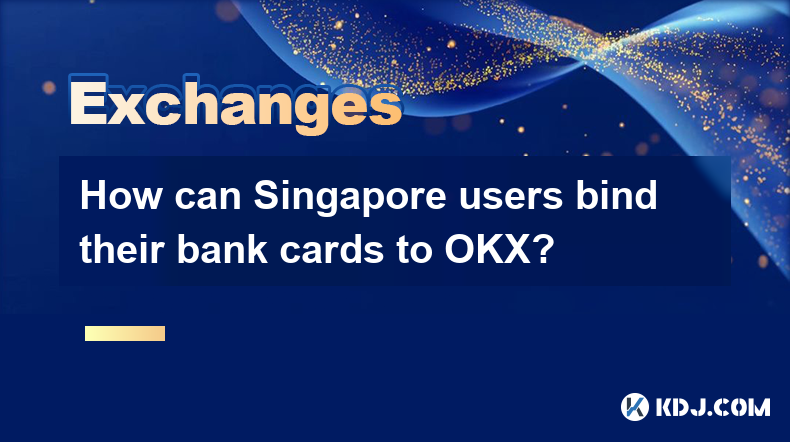
Understanding OKX's Bank Card Binding Process for Singapore Users
Binding a bank card to your OKX account allows for seamless deposits and withdrawals of fiat currency. However, the process might vary slightly depending on your specific bank and the payment methods OKX supports in Singapore. This article details the steps and addresses potential issues Singaporean users might encounter. Remember, always prioritize security and verify the legitimacy of any websites or links before proceeding.
Step-by-Step Guide to Bank Card Binding on OKX (Singapore)
The exact steps may vary slightly based on OKX's interface updates, but the general process remains consistent. Always refer to the official OKX app or website for the most up-to-date instructions.
Log in to your OKX account: Ensure you're using the official OKX app or website and have logged in with your verified credentials.
Navigate to the "Funds" or "Fiat" section: This section usually houses options for depositing and withdrawing fiat currencies. The exact name might differ slightly.
Select "Deposit": Choose the option to deposit funds into your OKX account.
Choose your preferred currency and payment method: Select the currency you wish to deposit (e.g., SGD) and choose "Bank Card" as your payment method.
Enter your bank card details: Carefully enter your card number, expiry date, and CVV code. Double-check for accuracy to avoid errors.
Confirm your details: Review all entered information before confirming the binding process.
Complete verification (if required): OKX may require additional verification steps, such as confirming a code sent via SMS or email, to ensure the security of your account.
Successful Binding: Once the process is complete, your bank card should be successfully bound to your OKX account. You should now be able to deposit funds.
Potential Issues and Troubleshooting
While the process is generally straightforward, Singaporean users might encounter some challenges.
Unsupported Banks: OKX might not support all Singaporean banks. Check their supported banks list before attempting to bind your card. If your bank is not listed, you might need to explore alternative deposit methods.
Verification Failures: Verification failures can occur due to incorrect information or issues with your bank's systems. Double-check your details and contact your bank if necessary.
Transaction Limits: OKX may impose daily or monthly transaction limits. Review these limits before attempting large deposits.
Security Concerns: Always use a secure internet connection and be cautious of phishing attempts. Never share your card details with unauthorized individuals or websites.
Understanding Security Measures
Security is paramount when dealing with financial transactions. OKX employs various security measures to protect user funds and information.
Two-Factor Authentication (2FA): Enabling 2FA adds an extra layer of security, requiring a second verification code in addition to your password.
Email and SMS Notifications: OKX usually sends notifications to your registered email and phone number for any transactions made on your account.
Withdrawal Verification: OKX often requires verification for withdrawals, adding another security layer to prevent unauthorized access.
Alternative Deposit Methods for Singapore Users
If you encounter issues binding your bank card, consider these alternatives:
Third-party payment platforms: OKX may support other payment platforms popular in Singapore, such as PayNow or other local e-wallets.
Crypto-to-crypto transfers: If you already hold cryptocurrencies, you can transfer them directly to your OKX account.
Bank transfers: Direct bank transfers might be an option, although they may take longer to process.
Frequently Asked Questions (FAQs)
Q: What banks does OKX support in Singapore?
A: OKX's supported banks in Singapore can change, so always check their official website or app for the most current list. The availability depends on their partnerships and agreements with various financial institutions.
Q: What if my bank card is not supported?
A: If your bank isn't supported, explore alternative deposit methods such as third-party payment platforms or crypto-to-crypto transfers, as described above.
Q: How long does it take to bind a bank card?
A: The binding process is usually quick, but it can vary depending on your bank and OKX's processing times. It might take a few minutes to a few hours.
Q: Is it safe to bind my bank card to OKX?
A: OKX employs security measures to protect user data, but always exercise caution. Use strong passwords, enable 2FA, and be wary of phishing attempts. Regularly review your account activity.
Q: What are the transaction limits for bank card deposits?
A: Transaction limits vary and are subject to change. Always check the OKX platform for the current limits before making a deposit. These limits are often put in place for security and regulatory compliance reasons.
Q: What should I do if I encounter problems binding my bank card?
A: If you have trouble, review the steps carefully, check your internet connection, and ensure you're entering the correct information. You can also contact OKX's customer support for assistance. They should be able to help troubleshoot the issue.
Q: Are there any fees associated with binding or using a bank card on OKX?
A: OKX may charge fees for deposits or withdrawals, depending on your bank and the specific transaction. Always check the fee schedule on their website before proceeding. These fees can vary and may change over time.
Disclaimer:info@kdj.com
The information provided is not trading advice. kdj.com does not assume any responsibility for any investments made based on the information provided in this article. Cryptocurrencies are highly volatile and it is highly recommended that you invest with caution after thorough research!
If you believe that the content used on this website infringes your copyright, please contact us immediately (info@kdj.com) and we will delete it promptly.
- RUVI Token Soars: Can It Eclipse Cardano's Forecast?
- 2025-06-29 02:30:12
- Meme Coin Mania: Can Little Pepe Outshine Shiba Inu and Dogecoin?
- 2025-06-29 02:30:12
- XRP Tokens: Navigating Financial Status and the Art of Buying In
- 2025-06-29 02:50:12
- Shiba Inu, Trump Coin, and the Crypto Bull Run: What's the Deal?
- 2025-06-29 03:50:12
- Coinbase on the 2025 List of Influential Companies: A Crypto Powerhouse?
- 2025-06-29 04:10:12
- Solana, Shiba Inu, and Pepe Coin: What's Hot and What's Not in the Crypto World
- 2025-06-29 03:55:13
Related knowledge
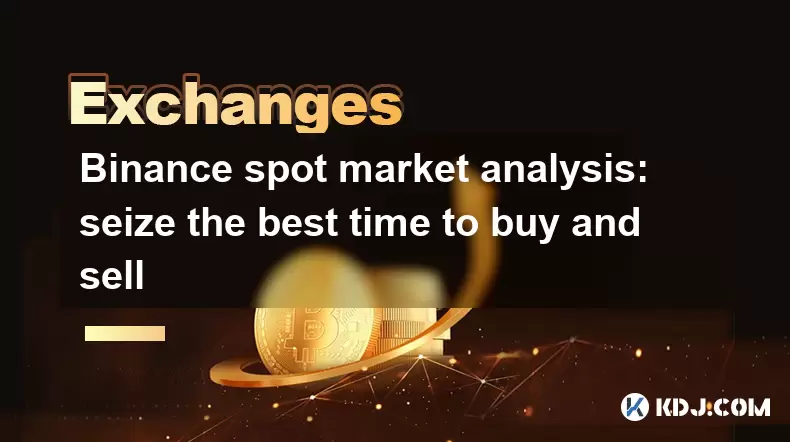
Binance spot market analysis: seize the best time to buy and sell
Jun 19,2025 at 04:56pm
Understanding the Binance Spot MarketThe Binance spot market is one of the most popular platforms for cryptocurrency trading globally. It allows users to trade digital assets at current market prices, making it essential for traders aiming to buy low and sell high. Unlike futures or margin trading, spot trading involves direct ownership of the asset aft...
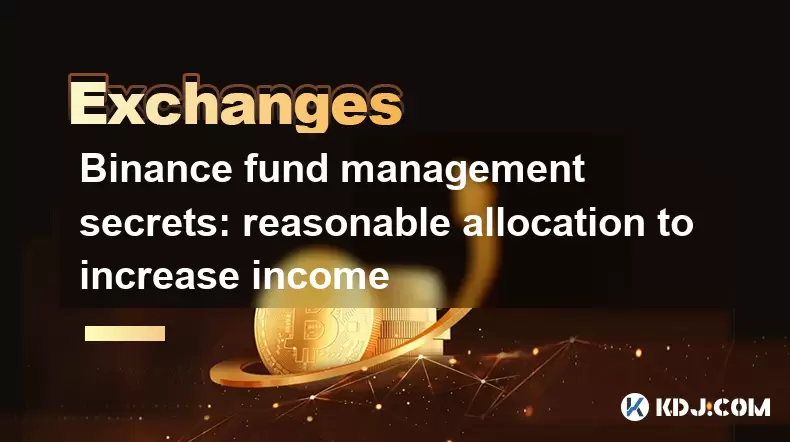
Binance fund management secrets: reasonable allocation to increase income
Jun 22,2025 at 02:29pm
Understanding Binance Fund ManagementBinance fund management involves strategic allocation of your cryptocurrency assets to optimize returns while managing risk. The key to successful fund management lies in understanding how different investment options on the Binance platform can be utilized to create a diversified portfolio. This includes spot tradin...

Binance trading pair selection skills: find the best buying and selling combination
Jun 23,2025 at 02:49am
Understanding the Basics of Trading Pairs on BinanceBefore diving into trading pair selection skills, it's essential to understand what a trading pair is. On Binance, a trading pair refers to two cryptocurrencies that can be traded against each other. For example, BTC/USDT means Bitcoin is being traded against Tether. Each trading pair has its own liqui...

Binance new coin mining strategy: participate in Launchpool to earn income
Jun 23,2025 at 11:56am
What is Binance Launchpool and how does it work?Binance Launchpool is a feature introduced by the world’s largest cryptocurrency exchange, Binance, to allow users to earn new tokens through staking. This platform enables users to stake their existing cryptocurrencies (such as BNB, BUSD, or other supported assets) in exchange for newly launched tokens. T...
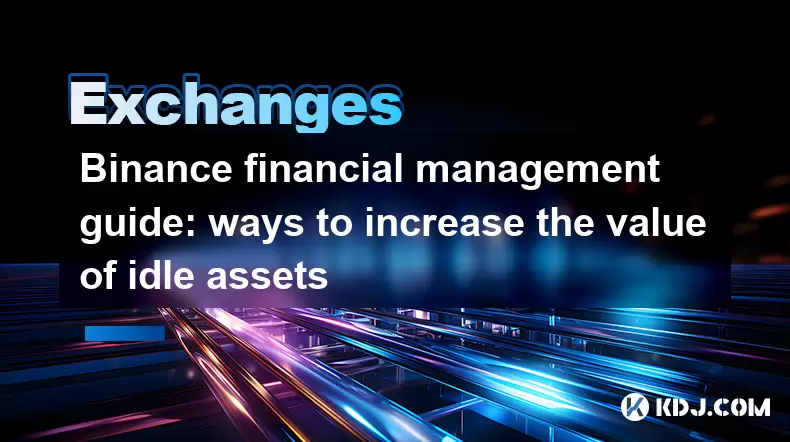
Binance financial management guide: ways to increase the value of idle assets
Jun 19,2025 at 11:22pm
Understanding Idle Assets in the Cryptocurrency SpaceIn the fast-paced world of cryptocurrency, idle assets refer to digital currencies that are not actively being used for trading, staking, or yield farming. Holding these funds in a wallet without utilizing them means missing out on potential growth opportunities. Binance, as one of the leading platfor...
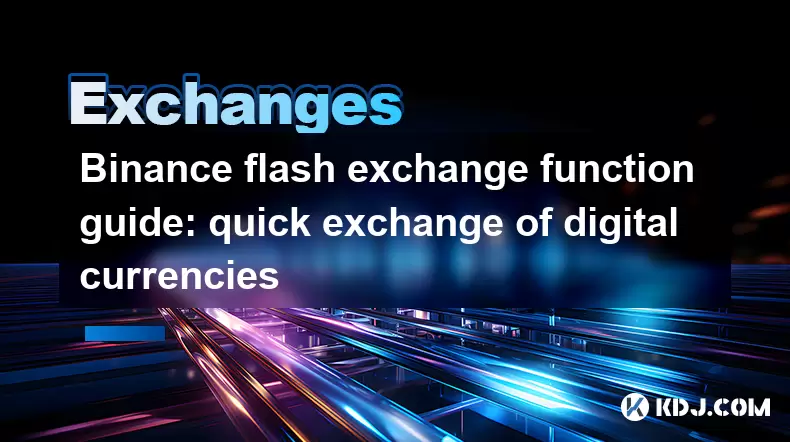
Binance flash exchange function guide: quick exchange of digital currencies
Jun 23,2025 at 12:29pm
What is the Binance Flash Exchange Function?The Binance Flash Exchange function is a powerful tool designed to allow users to instantly swap between supported cryptocurrencies without the need for placing traditional buy/sell orders. This feature simplifies the trading process by offering a direct exchange mechanism, eliminating the requirement to conve...

Binance spot market analysis: seize the best time to buy and sell
Jun 19,2025 at 04:56pm
Understanding the Binance Spot MarketThe Binance spot market is one of the most popular platforms for cryptocurrency trading globally. It allows users to trade digital assets at current market prices, making it essential for traders aiming to buy low and sell high. Unlike futures or margin trading, spot trading involves direct ownership of the asset aft...

Binance fund management secrets: reasonable allocation to increase income
Jun 22,2025 at 02:29pm
Understanding Binance Fund ManagementBinance fund management involves strategic allocation of your cryptocurrency assets to optimize returns while managing risk. The key to successful fund management lies in understanding how different investment options on the Binance platform can be utilized to create a diversified portfolio. This includes spot tradin...

Binance trading pair selection skills: find the best buying and selling combination
Jun 23,2025 at 02:49am
Understanding the Basics of Trading Pairs on BinanceBefore diving into trading pair selection skills, it's essential to understand what a trading pair is. On Binance, a trading pair refers to two cryptocurrencies that can be traded against each other. For example, BTC/USDT means Bitcoin is being traded against Tether. Each trading pair has its own liqui...

Binance new coin mining strategy: participate in Launchpool to earn income
Jun 23,2025 at 11:56am
What is Binance Launchpool and how does it work?Binance Launchpool is a feature introduced by the world’s largest cryptocurrency exchange, Binance, to allow users to earn new tokens through staking. This platform enables users to stake their existing cryptocurrencies (such as BNB, BUSD, or other supported assets) in exchange for newly launched tokens. T...

Binance financial management guide: ways to increase the value of idle assets
Jun 19,2025 at 11:22pm
Understanding Idle Assets in the Cryptocurrency SpaceIn the fast-paced world of cryptocurrency, idle assets refer to digital currencies that are not actively being used for trading, staking, or yield farming. Holding these funds in a wallet without utilizing them means missing out on potential growth opportunities. Binance, as one of the leading platfor...

Binance flash exchange function guide: quick exchange of digital currencies
Jun 23,2025 at 12:29pm
What is the Binance Flash Exchange Function?The Binance Flash Exchange function is a powerful tool designed to allow users to instantly swap between supported cryptocurrencies without the need for placing traditional buy/sell orders. This feature simplifies the trading process by offering a direct exchange mechanism, eliminating the requirement to conve...
See all articles























